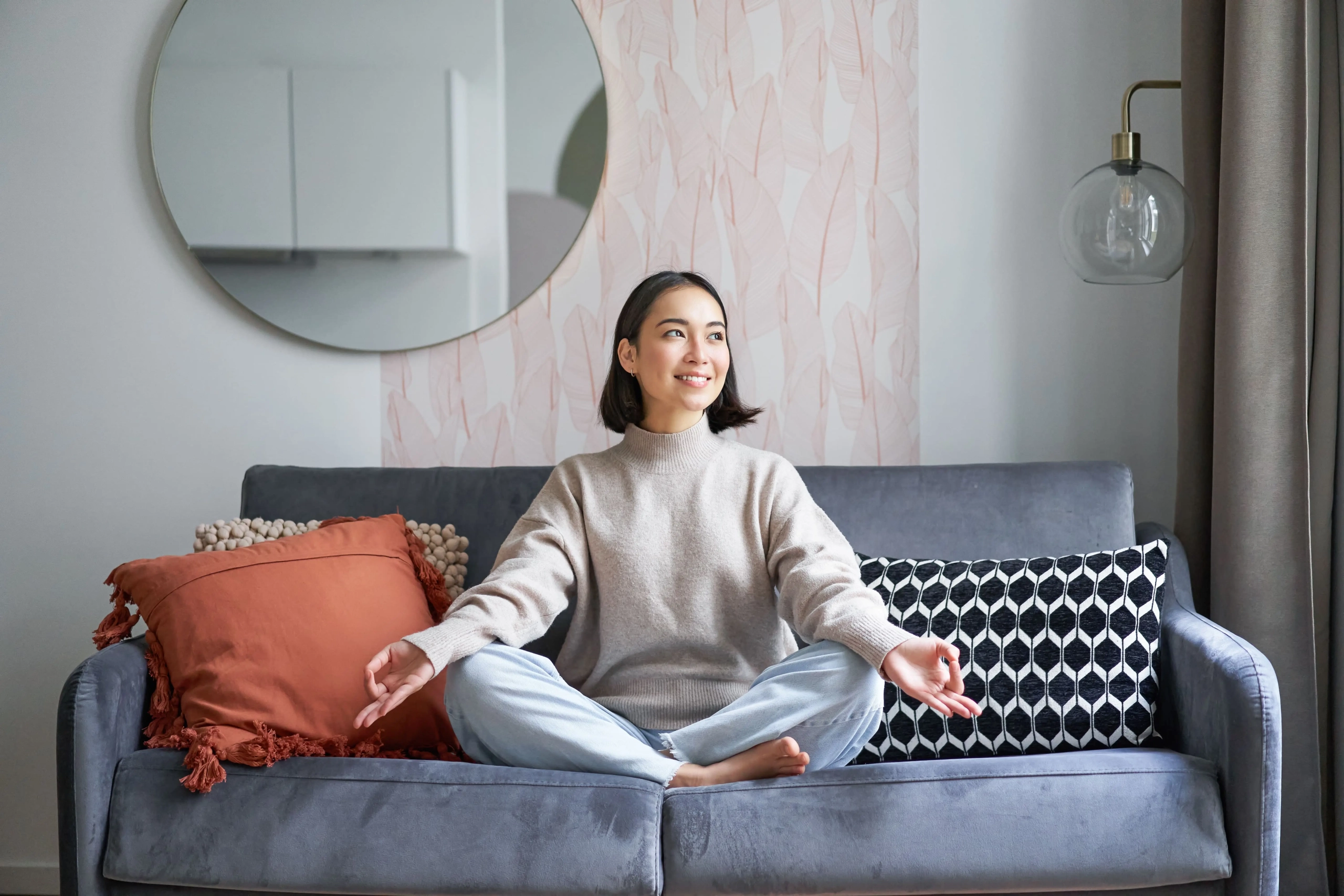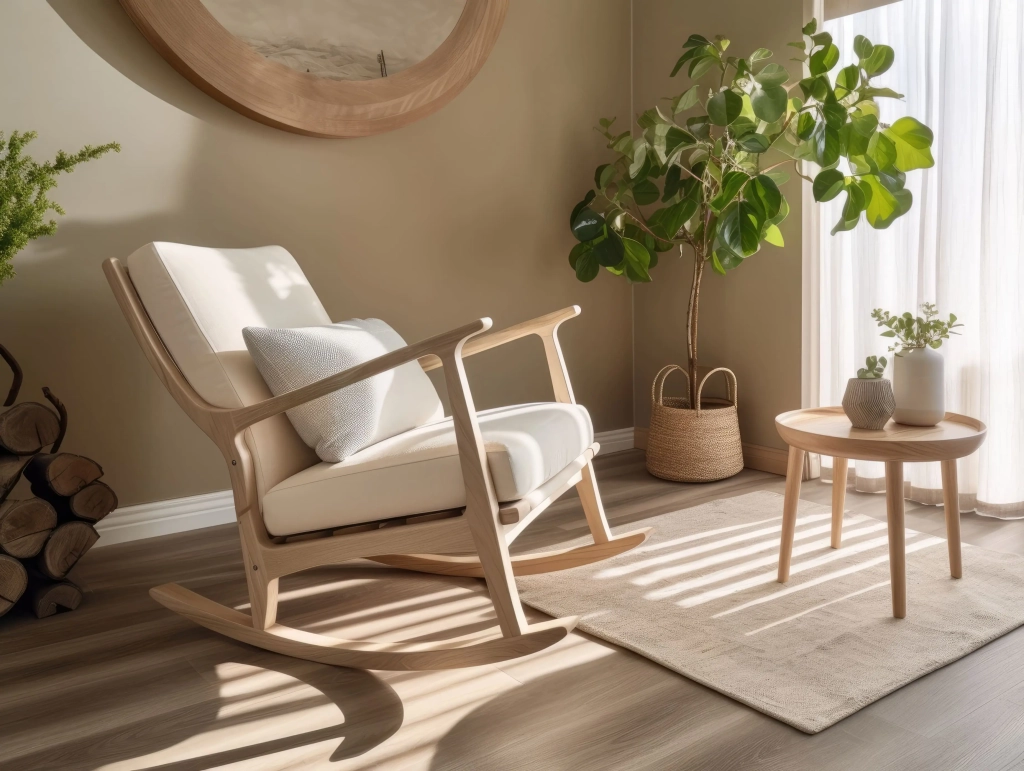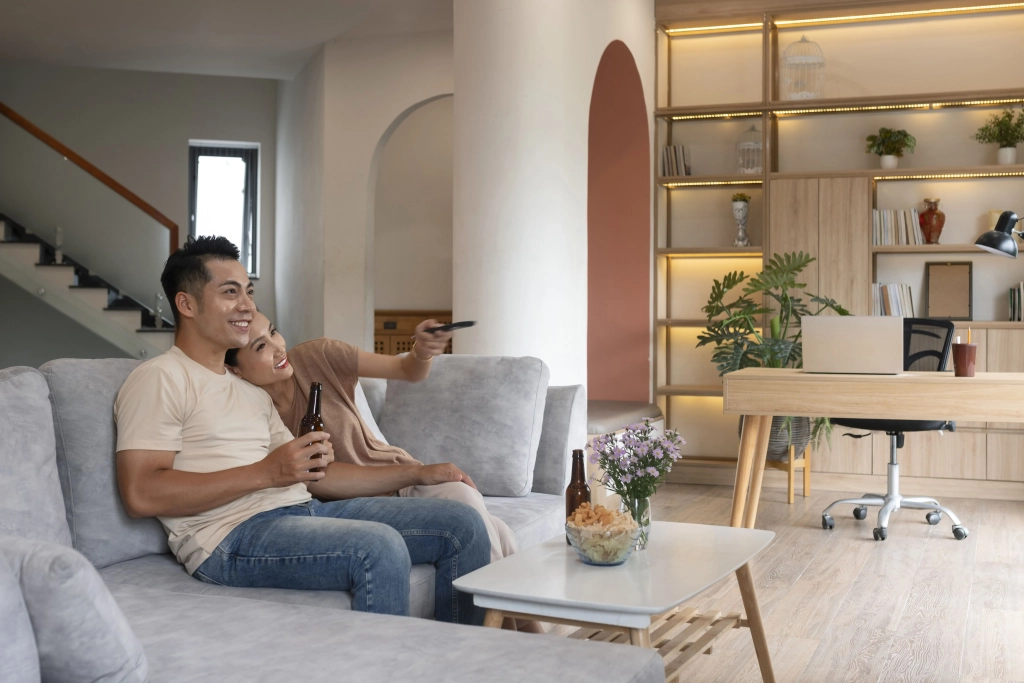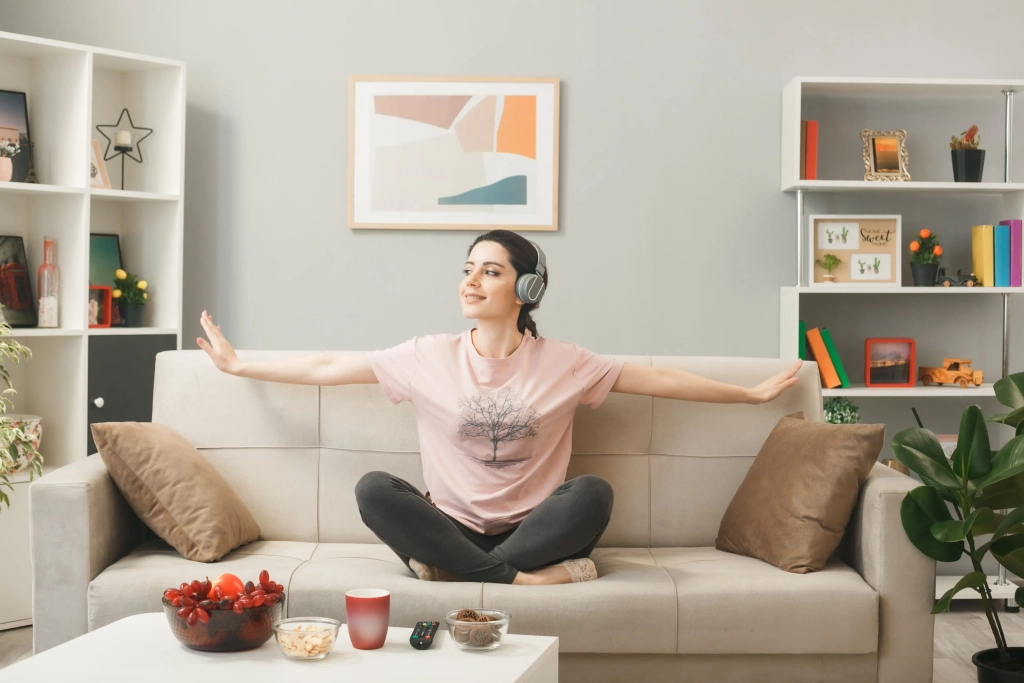Mindfulness Manifested: Creating Calm Spaces at Home

With the hustle and bustle of today’s world, our home has become a sanctuary where we seek solace and peace. Incorporating mindfulness into our interiors is more than a design trend; it’s a reflection of our aspirations for harmony and tranquility.
By understanding mindful interiors, diving into calm design trends, and grasping the essence of well-being in decor, we can create spaces that truly resonate with our inner selves.
RELATED: Minimalist House: Creating a Clutter-Free and Stylish Home
Introduction to Mindful Interiors
History and Philosophy Behind Mindful Spaces
Mindful interiors aren’t a recent fad. They trace back to ancient civilizations that believed in harmonizing with their surroundings. For instance, the Japanese philosophy of ‘Wabi-Sabi’ celebrates the beauty in imperfection and transience. Such age-old concepts remind us that finding peace at home is a timeless endeavor.
Psychological Impact of Mindful Decor
It’s no secret that our surroundings influence our mood. A cluttered space can lead to a cluttered mind. On the flip side, a thoughtfully designed room can elevate our spirits, reduce anxiety, and encourage relaxation.

Trends in Calm Design
Minimalism: Less is More
The mantra of minimalism revolves around simplicity. By reducing clutter and focusing on essential items, this design trend emphasizes the beauty of space and structure. The result? A serene environment that radiates peace.
Biophilic Design: Embracing Nature
Humans are innately drawn to nature. Biophilic design taps into this connection by integrating natural elements into our homes. Think indoor plants, wooden furnishings, and stone accents. These elements don’t just look good—they also enhance our well-being.
Pastel and Neutral Tones
Colors play a pivotal role in setting the room’s mood. Pastel and neutral tones, with their soft and soothing vibes, are a go-to choice for those looking to create a calm and serene atmosphere at home.
Well-being in Decor
Role of Textures and Fabrics
Imagine sinking into a soft velvet couch or walking barefoot on a plush rug. Textures and fabrics have a tactile appeal, adding a layer of comfort and luxury to our spaces.

Incorporating Personal Memories
Decor goes beyond aesthetics. Incorporating personal memories, like family photographs or travel souvenirs, can make a space feel truly yours, radiating warmth and nostalgia.
Importance of Natural Light
Natural light doesn’t just illuminate; it rejuvenates. Spaces bathed in sunlight feel more open, airy, and positive. It’s no wonder architects and interior designers prioritize maximizing natural light.
Achieving Balance in Interior Design
Feng Shui and Spatial Harmony
Originating from ancient China, Feng Shui emphasizes creating balance and harmony in one’s environment. By arranging furniture and decor items strategically, one can promote positive energy flow and holistic well-being.
Aromatherapy and Scent
The sense of smell is powerful. By infusing our homes with soothing scents like lavender or chamomile, we can further enhance the calming atmosphere.
Adapting to the Future of Calm Spaces
Smart Home Technologies
The future is digital. With advancements in smart home technologies, we can now control lighting, temperature, and even scents with the click of a button, ensuring our homes always resonate with calmness.
Sustainable Choices in Home Decor
With the rising awareness about our planet’s well-being, sustainable decor choices are gaining traction. By opting for eco-friendly furniture and decor, we’re not just curating calm spaces but also contributing to a healthier Earth.
The Role of Art in Mindful Spaces
Harnessing the Power of Visual Elements
Art, in its myriad forms, has the transformative power to evoke a wide range of emotions. In a space aiming for calmness, art becomes a vehicle to transport the viewer to a place of serenity.
Whether it’s a soothing landscape painting, an abstract art piece with flowing forms, or a sculpture inspired by nature, the right piece of art can be the focal point of a room’s tranquility.
Personal Connection to Artworks
Just as decor is personalized through memories, art can be a reflection of personal experiences, tastes, and aspirations.
Choosing a piece that resonates with your own journey or emotions ensures that every time you gaze upon it, you feel a sense of connection and peace. Remember, it isn’t about the price or the fame of the artwork, but rather the sentiment it embodies.
The Soundscape of a Calm Home
Importance of Auditory Elements
While visual elements play a massive role in shaping the ambiance of a space, the auditory environment is just as crucial. The sounds around us deeply impact our state of mind.
The gentle hum of a wind chime, the soft gurgling of a water feature, or the subtle tunes from a calming playlist can significantly enhance the sense of calmness within a home.

Creating a Harmonious Soundscape
To truly encapsulate the essence of “Mindfulness Manifested: Creating Calm Spaces at Home,” one needs to pay attention to the auditory environment.
This could mean investing in soundproofing, especially in urban settings, or introducing elements like tabletop fountains or even digital sound machines that mimic natural sounds. Incorporating these auditory elements will complete the sensory experience of a serene space, leading to a holistic sense of well-being.
Crafting calm spaces at home is more than just a design endeavor; it’s a journey towards well-being. By intertwining mindfulness with our interiors, we’re not just decorating our homes—we’re curating sanctuaries that resonate with peace, balance, and personal memories. In this ever-evolving world, the essence of creating Calm Spaces at Home remains a timeless pursuit.
FAQs
What is the main philosophy behind mindful interiors?
Mindful interiors focus on creating spaces that encourage relaxation, peace, and harmony. Rooted in ancient philosophies, they prioritize simplicity, nature, and personal touches.
Why are natural elements like plants and wood prominent in calm design trends?
Humans have an innate connection with nature. Incorporating natural elements brings a touch of the outdoors inside, promoting relaxation and reducing stress.
How do colors impact the sense of calm in a room?
Colors have a psychological impact. Soothing tones like pastels and neutrals can evoke feelings of tranquility, making them popular choices for creating calm spaces.
Is sustainable decor expensive?
While some sustainable items may have a higher upfront cost, they often last longer, proving cost-effective in the long run. Moreover, with increasing demand, there are now affordable eco-friendly decor options available.
Can smart technologies truly enhance calmness at home?
Absolutely! Smart technologies allow customization, ensuring our homes resonate with our mood and preferences. Whether it’s dimming the lights or setting a calming playlist, tech empowers us to curate our ideal environment.
Why is personal memory incorporation essential in decor?
Personal memories add a unique touch, making a space feel truly yours. They radiate warmth, familiarity, and nostalgia, further enhancing the room’s comfort.
Read more here: AllProperties Latest Blogs




